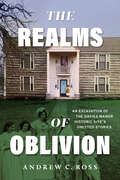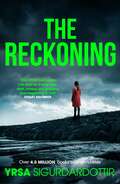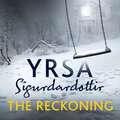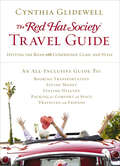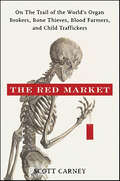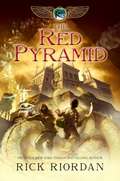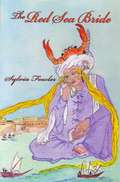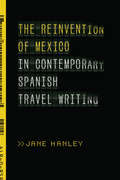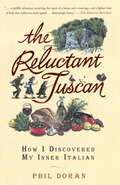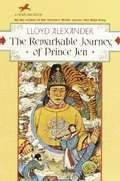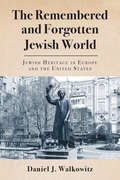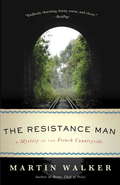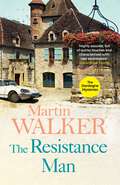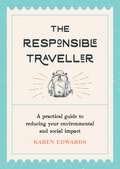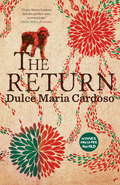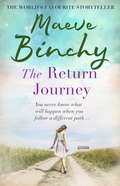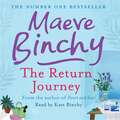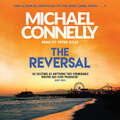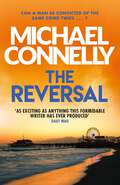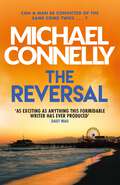- Table View
- List View
The Realms of Oblivion: An Excavation of the Davies Manor Historic Site's Omitted Stories
by Andrew C. RossThe Realms of Oblivion explores the complexities involved in reconciling competing versions of history, channeled through Davies Manor, a historic site near Memphis that once centered a wealthy slave-owning family&’s sprawling cotton plantation. Interrogating the forces of memorialization that often go unquestioned in the stories we believe about ourselves and our communities, this book simultaneously tells an informative and engrossing bottom-up history—of the Davies family, of the Black families they enslaved and exploited across generations, and of Memphis and Shelby County—while challenging readers to consider just what upholds the survival of that history into the present day. Written in an engaging and critical style, The Realms of Oblivion is grounded in a rich source base, ranging from nineteenth-century legal records to the personal papers of the Davies family to twentieth-century African American oral histories. Author Andrew C. Ross uses these sources to unearth the stark contrast between the version of Davies Manor&’s history that was built out of nostalgia, and the version that records have proven to actually be true. As a result, Ross illuminates the ongoing need for a deep and honest reckoning with the history of the South and of the United States, on the part of both individuals and community institutions such as local historic sites and small museums.
The Reckoning: A Completely Chilling Thriller, from the Queen of Icelandic Noir (Freyja and Huldar #2)
by Yrsa Sigurdardottir'Yrsa is a magnificent writer' Karin Slaughter'The queen of Icelandic thriller writers' Guardian A chilling note written by a thirteen-year-old predicting the deaths of six people is found in a time capsule, ten years after it was buried. Can it be a real threat?Detective Huldar turns to psychologist Freyja to help understand the child who hid the message. But the discovery of the letter coincides with a string of murders. All of the victims match the initials from the note. Huldar and Freyja must race to identify the writer and the murderer, before the rest of the targets are killed... 'One of the best books I've read for a long time: dark, creepy, and gripping from beginning to end.' Stuart MacBride 'Will give you thrills and chills in equal measures.' Cosmopolitan
The Reckoning: A Completely Chilling Thriller, from the Queen of Icelandic Noir (Freyja and Huldar #2)
by Yrsa Sigurdardottir'Yrsa is a magnificent writer' Karin Slaughter'The queen of Icelandic thriller writers' Guardian A chilling note written by a thirteen-year-old predicting the deaths of six people is found in a time capsule, ten years after it was buried. Can it be a real threat?Detective Huldar turns to psychologist Freyja to help understand the child who hid the message. But the discovery of the letter coincides with a string of murders. All of the victims match the initials from the note. Huldar and Freyja must race to identify the writer and the murderer, before the rest of the targets are killed...'One of the best books I've read for a long time: dark, creepy, and gripping from beginning to end.' Stuart MacBride'Will give you thrills and chills in equal measures.' Cosmopolitan
The Reckoning: A Completely Chilling Thriller, from the Queen of Icelandic Noir (Freyja and Huldar #2)
by Yrsa SigurdardottirYrsa Sigurdardottir, winner of the 2015 Petrona Award for best Scandinavian Crime Novel, delivers another tour de force in her second novel in the Freyja and Huldar series.A chilling note predicting the deaths of six people is found in a school's time capsule, ten years after it was buried. But surely, if a thirteen-year-old wrote it, it can't be a real threat...Detective Huldar suspects he's been given the investigation simply to keep him away from real police work. He turns to psychologist Freyja to help understand the child who hid the message. Soon, however, they find themselves at the heart of another shocking case.For the discovery of the letter coincides with a string of macabre events: body parts found in a garden, followed by the murder of the man who owned the house. His initials are BT, one of the names on the note.Huldar and Freyja must race to identify the writer, the victims and the murderer, before the rest of the targets are killed...(P)2018 Hodder & Stoughton Limited
The Red Hat Society Travel Guide: Hitting the Road with Confidence, Class, and Style
by Cynthia GlidewellThe perfect US travel guide for women, baby boomers and beyond, who want to become savvy, safe travelers, and have fun doing it.Whether you already belong to a Red Hat Society chapter or just want more fun and pizzazz in your life now that you have time to indulge, this book answers every nagging question and includes practical tips and helpful info on:Deciding when and where to goTaking a trip with your girlfriendsChoosing where to eat and stay in twenty top vacation destinationsTraveling by train, plane, and autoAnd more!Full of advice and tips from the ladies of The Red Hat Society, this fun, informative guide addresses your greatest travel concerns, such as negotiating airport security and staying healthy and safe, and simplifies the sometimes complicated tasks associated with traveling, like reading subway maps or understanding the rules of tipping. Discover hundreds of fabulous boutique hotels, favorite local restaurants, and insider tips on shopping, all recommended by Red Hat Society members around the country!For time- and money-saving ideas, safety tips, packing and shopping plans, and destination suggestions that span the USA from the Golden Gate Bridge to the Brooklyn Bridge, turn to The Red Hat Society Travel Guide.
The Red Market: On the Trail of the World's Organ Brokers, Bone Thieves, Blood Farmers, and Child Traffickers
by Scott Carney“An unforgettable nonfiction thriller, expertly reported….A tremendously revealing and twisted ride, where life and death are now mere cold cash commodities.”—Michael Largo, author of Final ExitsAward-winning investigative journalist and contributing Wired editor Scott Carney leads readers on a breathtaking journey through the macabre underworld of the global body bazaar, where organs, bones, and even live people are bought and sold on The Red Market. As gripping as CSI and as eye-opening as Mary Roach’s Stiff, Carney’s The Red Market sheds a blazing new light on the disturbing, billion-dollar business of trading in human body parts, bodies, and child trafficking, raising issues and exposing corruptions almost too bizarre and shocking to imagine.
The Red Pyramid (Kane Chronicles #1)
by Rick RiordanSince their mother's death, Carter and Sadie have become near strangers. While Sadie has lived with her grandparents in London, her brother has traveled the world with their father, the brilliant Egyptologist Dr. Julius Kane.
The Red Riviera: Gender, Tourism, and Postsocialism on the Black Sea
by Kristen GhodseeThis compelling ethnography of women working in Bulgaria's popular sea and ski resorts challenges the idea that women have consistently fared worse than men in Eastern Europe's transition from socialism to a market economy. For decades western European tourists have flocked to Bulgaria's beautiful beaches and mountains; tourism is today one of the few successful--and expanding--sectors of the country's economy. Even at the highest levels of management, employment in the tourism industry has long been dominated by women. Kristen Ghodsee explains why this is and how women working in the industry have successfully negotiated their way through Bulgaria's capitalist transformation while the fortunes of most of the population have plummeted. She highlights how, prior to 1989, the communist planners sought to create full employment for all at the same time that they steered women into the service sector. The women given jobs in tourism obtained higher educations, foreign language skills, and experiences working with Westerners, all of which positioned them to take advantage of the institutional changes eventually brought about by privatization. Interspersed throughout The Red Riviera are vivid examinations of the lives of Bulgarian women, including a waitress, a tour operator, a chef, a maid, a receptionist, and a travel agent. Through these women's stories, Ghodsee describes their employment prior to 1989 and after. She considers the postsocialist forces that have shaped the tourist industry over the past fifteen years: the emergence of a new democratic state, the small but increasing interest of foreign investors and transnational corporations, and the proliferation of ngos. Ghodsee suggests that many of the ngos, by insisting that Bulgarian women are necessarily disenfranchised, ignore their significant professional successes.
The Red Sea Bride
by Sylvia FowlerSylvia merges into a coterie of Western women married to Saudis, all of whom rely on their hearts and wits to keep an even keel. The author tells not just her own story, but those of her friends as well as of Saudi women she came to love as fiercely as her own blood relatives. Here is a tale of the passionate human heart and the choices some women make to follow it.
The Reinvention of Mexico in Contemporary Spanish Travel Writing
by Jane HanleyThe long history of transatlantic movement in the Spanish-speaking world has had a significant impact on present-day concepts of Mexico and the implications of representing Mexico and Latin America more generally in Spain, Europe, and throughout the world. In addition to analyzing texts that have received little to no critical attention, this book examines the connections between contemporary travel, including the local dynamics of encounters and the global circulation of information, and the significant influence of the history of exchange between Spain and Mexico in the construction of existing ideas of place. To frame the analysis of contemporary travel writing, author Jane Hanley examines key moments in the history of Mexican-Spanish relations, including the origins of narratives regarding Spaniards' sense of Mexico's similarity to and difference from Spain. This history underpins the discussion of the role of Spanish travelers in their encounters with Mexican peoples and places and their reflection on their own role as communicators of cultural meaning and participants in the tourist economy with its impact—both negative and positive—on places.
The Reluctant Tuscan
by Phil DoranRising From The Mist in the sun-blushed hills of Tuscany is Il Piccolo Rustico, a 300-year-old stone farmhouse that Nancy Doran dreams of lovingly restoring into an idlyllic home. All her husband Phil can see is a crumbling money pit that, as far as dreams go, is more of a nightmare. Reluctantly leaving behind high -octane, air-conditioned Los Angeles where he lives and works as a writer-producer, Phil is uprooted to a strange country intoxicated by O sole mio, virgin olive oil and oak-aged Chianti. The local village reveals itself to be a hive of seething passions, secrets and age-old blood feuds, and the newcomers find that life is not all strolls around town during the passagiato and relaxing under the awnings of picturesque cafes. Beset by a rift of exasperating challenges - from the cunning tricks of the Pinatore family to an infuriating Byzantine Italian bureaucracy - it is only with an inspired touch of the 'Inner Italian' that Phil and Nancy finally manage to soften the hearts of their neighbours and are embraced by the community.
The Remarkable Journey of Prince Jen
by Lloyd AlexanderWhen Prince Jen volunteers to search for the legendary court of Tien-kuo, a mysterious old man chooses six gifts for him to bear in homage: a saddle, a sword, a paint box, a bowl, a kite, and a flute. Puzzled by the gifts but full of high spirits and pride, Jen sets off, but stumbles almost immediately into a series of misfortunes. Only with the help of his faithful servant, Mafoo, and valiant flute-girl, Voyaging Moon, and only after a breathtakingly exciting string of adventures can Jen discover the real meaning of the gifts and face his true destiny. . . .
The Remembered and Forgotten Jewish World: Jewish Heritage in Europe and the United States
by Daniel J. WalkowitzIn the late nineteenth and early twentieth centuries, the Jewish socialist movement played a vital role in protecting workers’ rights throughout Europe and the Americas. Yet few traces of this movement or its accomplishments have been preserved or memorialized in Jewish heritage sites. The Remembered and Forgotten Jewish World investigates the politics of heritage tourism and collective memory. In an account that is part travelogue, part social history, and part family saga, acclaimed historian Daniel J. Walkowitz visits key Jewish museums and heritage sites from Berlin to Belgrade, from Krakow to Kiev, and from Warsaw to New York, to discover which stories of the Jewish experience are told and which are silenced. As he travels to thirteen different locations, participates in tours, displays, and public programs, and gleans insight from local historians, he juxtaposes the historical record with the stories presented in heritage tourism. What he finds raises provocative questions about the heritage tourism industry and its role in determining how we perceive Jewish history and identity. This book offers a unique perspective on the importance of collective memory and the dangers of collective forgetting.
The Reporter's Kitchen: Essays
by Jane KramerJane Kramer started cooking when she started writing. Her first dish, a tinned-tuna curry, was assembled on a tiny stove in her graduate student apartment while she pondered her first writing assignment. From there, whether her travels took her to a tent settlement in the Sahara for an afternoon interview with an old Berber woman toiling over goat stew, or to the great London restaurateur and author Yotam Ottolenghi's Notting Hill apartment, where they assembled a buttered phylo-and-cheese tower called a mutabbaq, Jane always returned from the field with a new recipe, and usually, a friend. For the first time, Jane's beloved food pieces from The New Yorker, where she has been a staff writer since 1964, are arranged in one place--a collection of definitive chef profiles, personal essays, and gastronomic history that is at once deeply personal and humane. The Reporter's Kitchen follows Jane everywhere, and throughout her career--from her summer writing retreat in Umbria, where Jane and her anthropologist husband host memorable expat Thanksgivings--in July--to the Nordic coast, where Jane and acclaimed Danish chef Rene Redzepi, of Noma, forage for edible sea-grass. The Reporter’s Kitchen is an important record of culture distilled through food around the world. It's welcoming and inevitably surprising.
The Resistance Man: A Mystery Of The French Countryside (Bruno, Chief Of Police Ser. #6)
by Martin WalkerBruno Courrèges--provincial French police chief extraordinaire--is back in another delectable tale of mystery and suspense that unfolds in the gastronomically ravishing Dordogne.A veteran of the Resistance dies, and among his possessions are documents that connect him to a notorious train robbery. A former British spymaster's estate is burglarized, the latest in a spree of expert thefts. An academic's home is broken into just as she is finishing a revelatory book on France's nuclear weapons program. An antiques dealer is found brutally murdered, and his former lover, the number one suspect, is on the run.It's just another summer in St. Denis for Bruno, who must balance the constant barrage of demands on his time and expertise--including the complex affections of two powerful women, town politics (the mayor is having romantic problems of his own), his irrepressible puppy, Balzac, and nights entertaining friends and visitors with ever-sumptuous repasts--with a new focus on the mounting crime wave, whose seemingly unrelated events Bruno begins to suspect are linked. His search for clues to crimes old and new leads to stunning revelations about both his country's history and his own, and puts several more lives--including Bruno's--in deadly danger. In a thrilling denouement that proves the past is never really past, Bruno fights to secure the future of his beloved community and those he cares about most. As charming and compelling as its hero, The Resistance Man offers fresh joys for loyal readers and newcomers alike.From the Hardcover edition.
The Resistance Man: Bruno is dogged by the past as he solves a thrilling modern murder (The Dordogne Mysteries #6)
by Martin Walker'WALKER BRINGS TO LIFE A COMPLETE COMMUNITY AND THE CHIEF OF POLICE WHO IS ITS PROTECTOR, TEACHER AND FRIEND' - Literary ReviewIn rural Dordogne, Bruno, Chief of Police, knows that WW2 casts the longest shadow. Rare bank notes are found, linking to the famous Neuvic train robbery of 1944 in the sixth internationally-bestselling case for France's favourite cop.In the small town of St Denis, Bruno, can't get a moment's rest. Some rare bank notes have come to light that may have links to the legendary Neuvic train robbery in 1944. The investigation is fraught with issues. Bruno is also dealing with a wave of local burglaries, which have brought his old flame, Isabelle - and their complicated history - back to the town. Worse is to come. Tasked with piecing together these past crimes, Bruno now finds he has the more pressing matter of a body on his hands. He must now trace the links between past and present to restore peace in his beloved town of St Denis.
The Responsible Traveller: A Practical Guide to Reducing Your Environmental and Social Impact, Embracing Sustainable Tourism and Travelling the World With a Conscience
by Karen EdwardsThe Responsible Traveller is your ticket to sustainable and ethical travel. This pocket-sized book provides the knowledge and tools that can help you to explore the world with a lighter footprint.Whether you travel out of curiosity, to find respite, to remind yourself of how vast and wonderful our planet is, or in search of life-shaping adventures, having the freedom to explore can be exhilarating and hugely rewarding. However we owe it to the people, cultures, ecosystems and wildlife that we encounter along the way to travel with respect; to preserve our beautiful world for generations to come.The Responsible Traveller will show you how to make actionable changes that result in more thoughtful and adventurous travels, while also doing our very best for Planet Earth. Through case studies and storytelling, you’ll learn about the environmental and social effects of tourism and gain a deeper understanding of cultural sensitivity. And through simple, achievable tips and practical lifestyle changes, you’ll discover how you can make an almighty difference in reducing your impact. Empowered with this information, perhaps your next adventure will be inspired by consideration, understanding and compassion.
The Responsible Traveller: A Practical Guide to Reducing Your Environmental and Social Impact, Embracing Sustainable Tourism and Travelling the World With a Conscience
by Karen EdwardsThe Responsible Traveller is your ticket to sustainable and ethical travel. This pocket-sized book provides the knowledge and tools that can help you to explore the world with a lighter footprint.Whether you travel out of curiosity, to find respite, to remind yourself of how vast and wonderful our planet is, or in search of life-shaping adventures, having the freedom to explore can be exhilarating and hugely rewarding. However we owe it to the people, cultures, ecosystems and wildlife that we encounter along the way to travel with respect; to preserve our beautiful world for generations to come.The Responsible Traveller will show you how to make actionable changes that result in more thoughtful and adventurous travels, while also doing our very best for Planet Earth. Through case studies and storytelling, you’ll learn about the environmental and social effects of tourism and gain a deeper understanding of cultural sensitivity. And through simple, achievable tips and practical lifestyle changes, you’ll discover how you can make an almighty difference in reducing your impact. Empowered with this information, perhaps your next adventure will be inspired by consideration, understanding and compassion.
The Restaurant, A Geographical Approach: From Invention to Gourmet Tourist Destinations
by Olivier EtcheverriaThis book analyzes the way in which restaurants are geographical objects that reveal locational logics and strategies, and how restaurants weave close relationships with the space in which they are located. Originating from cities, restaurants feed off the urban environment as much as they feed it ? participating in the qualification, differentiation and hierarchy of cities. Indeed, restaurants in both the city and the countryside maintain a dialogical relationship with tourism. They can be vital players in the establishment of emerging types of gourmet tourism, sometimes even constituting as gourmet tourist destinations in their own right. They participate in the establishment of necessary conditions for local development. Some restaurants are even praised as historic sites, recognized as part of the local heritage, which reinforces their localization and their identity as a gourmet tourist destination.
The Return
by Dulce Maria CardosoEveryone has gone away... We too should no longer be here.Luanda, 1975. The Angolan War of Independence has been raging for at least a decade, but with the collapse of the Salazar dictatorship, defeat for the Portuguese is now in sight. Thousands of settlers are fleeing back to Portugal to escape the brutality of the Angolan rebels.Rui is fifteen years old. He has lived in Luanda all his life and has never even visited the far-away homeland - although he has heard many stories. But now his family are finally accepting that they too must return, and Rui is filled with a mixture of excitement and dread at the prospect. But just as they are leaving for the airport, his father is taken away by the rebels, and the family must leave without him.Not knowing if the father is alive or dead - or if they will ever find out what has become of him, Rui, his mother and sister try to rebuild their lives in their new home. This turns out to be a five star hotel in a quiet, seaside suburb of Lisbon, where returnee families are crammed into luxurious rooms by the dozen. These palatial surroundings are a cruel contrast with the reality of returnee life. The hotel becomes a curious form of purgatory as the families wait to discover what will become of them - ever conscious of the fact that they are hardly welcome back in their homeland. Rui has his own personal struggle with his new life: growing up, dropping out of school, facing discrimination, and the ever-present worry over his mother's deteriorating health and his father's fate.And then one night Rui's father returns from the dead.Translated from the Portuguese by Ángel Gurría-Quintana
The Return Journey
by Maeve Binchy'Heart-felt stories of life and love' Woman & Home from the No. 1 bestselling author'Maeve Binchy's work continues to inspire . . . thought-provoking, warm and funny in equal measure' WomanA pair of star-crossed travellers pick up each other's bags, and then learn that when you unlock a stranger's suitcase, you enter a stranger's life. An unspoken office passion meets the acid test on a business trip. A man and a woman's mutual disdain at first sight shows how deceptive appearances can be. And an insecure wife clings to the illusion of order, only to discover chaos at the hands of a house-sitter who opens the wrong doors.These and many more poignant, often humorous, unforgettable slices of life show why Maeve Binchy is one of the world's favourite storytellers.
The Return Journey
by Maeve BinchyIn this extraordinary collection of stories, the world-wide bestselling author of Evening Class once again reveals her incomparable understanding of matters of the heart. In The Return Journey, Maeve Binchy creates powerful compelling stories of love, loss, revelation, and reconciliation.A secretary's silent passion for her boss meets the acid test on a business trip; a man and a woman's mutual disdain at first sight shows how deceptive appearances can be; an insecure wife clings to the illusion of order, only to discover chaos at the hands of a house-sitter who opens the wrong doors; a pair of star-crossed travelers pick up each other's bags, and then learn when you unlock a stranger's suitcase, you enter a stranger's life. These and many more poignant, ironic, often humorous stories - unforgettable slices of life -make up The Return Journey, a spellbinding trip into the human heart.Read by Kate Binchy(p) 2009 Orion Publishing Group
The Reversal (Mickey Haller Series #3)
by Michael ConnellyMickey Haller and Harry Bosch together take on a seemingly unwinnable case in blistering legal thriller from Number One bestseller Michael Connelly.When defence lawyer Mickey Haller is invited by the Los Angeles County District Attorney to prosecute a case for him, he knows something strange is going on. Mickey's one of the best American legal brains in the business, and to switch sides likes this would be akin to asking a fox to guard the hen-house. But the high-profile case of Jason Jessup, a convicted child killer who spent almost 25 years on death row before DNA evidence freed him, is an intriguing one . . .Eager for the publicity and drawn to the challenge, Mickey takes the case, with LAPD Detective Harry Bosch on board as his lead investigator. But as a new trial date is set, it starts to look like he's been set up. Mickey and Harry are going to have to dig deep into the past and find the truth about what really happened to the victim all those years ago in this nail-biting courtroom drama.Read by Michael Brandon(p) 2010 Orion Publishing Group
The Reversal (Mickey Haller Series #3)
by Michael ConnellyMickey Haller and Harry Bosch together take on a seemingly unwinnable case in blistering legal thriller from Number One bestseller Michael Connelly.When defence lawyer Mickey Haller is invited by the Los Angeles County District Attorney to prosecute a case for him, he knows something strange is going on. Mickey's one of the best American legal brains in the business, and to switch sides likes this would be akin to asking a fox to guard the hen-house. But the high-profile case of Jason Jessup, a convicted child killer who spent almost 25 years on death row before DNA evidence freed him, is an intriguing one . . .Eager for the publicity and drawn to the challenge, Mickey takes the case, with LAPD Detective Harry Bosch on board as his lead investigator. But as a new trial date is set, it starts to look like he's been set up. Mickey and Harry are going to have to dig deep into the past and find the truth about what really happened to the victim all those years ago in this nail-biting courtroom drama.
The Reversal (Mickey Haller Series #3)
by Michael ConnellyMickey Haller and Harry Bosch together take on a seemingly unwinnable case in blistering legal thriller from Number One bestseller Michael Connelly.When defence lawyer Mickey Haller is invited by the Los Angeles County District Attorney to prosecute a case for him, he knows something strange is going on. Mickey's one of the best American legal brains in the business, and to switch sides likes this would be akin to asking a fox to guard the hen-house. But the high-profile case of Jason Jessup, a convicted child killer who spent almost 25 years on death row before DNA evidence freed him, is an intriguing one . . .Eager for the publicity and drawn to the challenge, Mickey takes the case, with LAPD Detective Harry Bosch on board as his lead investigator. But as a new trial date is set, it starts to look like he's been set up. Mickey and Harry are going to have to dig deep into the past and find the truth about what really happened to the victim all those years ago in this nail-biting courtroom drama.
